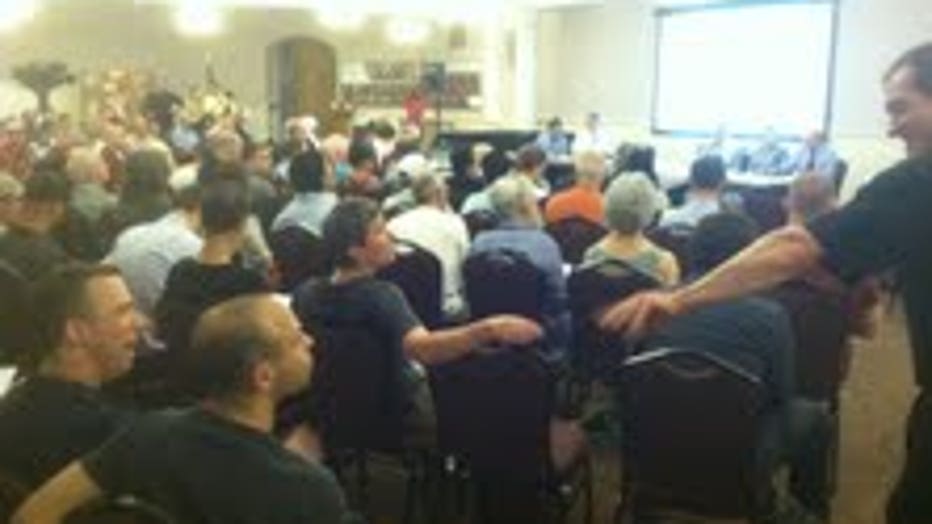Big meeting about tiny housing sparks debate
SEATTLE -- More than 100 Seattle residents crammed into a small meeting room Monday evening to vent about small living spaces known by many as 'apodments.'

It’s a cost effective trend popping up throughout the city. Several tiny living spaces similar to dorm rooms, each outfitted with a bed, bathroom and sink, but all individuals share one common kitchen and laundry room creating one large unit under building code.
Each room rents for $600-700 a month. They cater to a crowd of students and low income workers who can’t afford housing in the heart of the city.
Robert Pantley who represents micro-housing developers, said, “63% of people coming to work in the city are coming from outside the city. Jammed freeways taking up parking in our neighborhoods because we’re taking away the affordability component for them to live here.”
The overwhelming majority of people attending Monday night’s meeting were against the idea, like long time Seattle resident, Paul Haury. His single family home is on a street with two micro-housing developments. He worries about parking and increased traffic they might bring.
“The truth of the matter is if it gets to the point where there are 700 more cars vying for places to park on my block which is what we’re looking at, that’s kind of problematic and it’s going to reduce the quality of life,” Haury said.
Haury’s concern and many others are being heard and city council members are here listening
Councilmember Tom Rasmussen was one of three Seattle councilmembers attending.
Rasmussen said, “We want to hear from the community what they’re concerns are. What theyh would like the city to do. But we also want to hear from developers. What are they building. What are they seeing in terms of the market.”
Based on this discussion city leaders might change the future of development in Seattle.
“A lot of people want to live here,” Rasmussen said. “It’s very difficult to afford to be able to live here if you have a moderate or love income. We want to make sure we have a good range of housing for everyone but we want to also make sure that it’s safe and healthy and it fits in with all our overall goals and plans for the city.”

